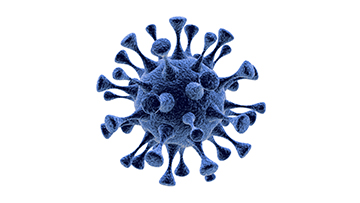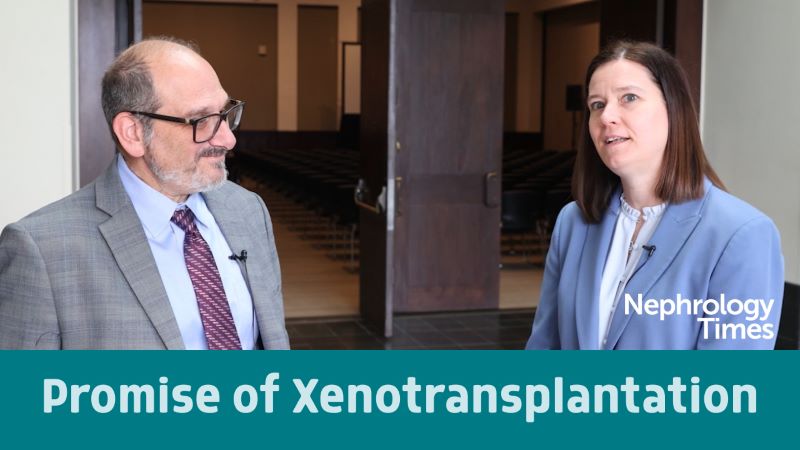
At the height of the COVID-19 pandemic, there was a substantial decrease in solid organ transplant rates worldwide. Kidney transplant rates were the most affected, followed by lung, liver, and heart transplants. Kidney transplant is the most common solid organ transplant in the United States, with a record 26,228 kidney transplants performed in 2022. Following the outbreak of COVID-19, transplant surgeons and nephrologists have been faced with decisions regarding the use of kidneys from donors with SARS-CoV-2 infection.
At the outset of the COVID-19 pandemic, COVID-19-positive patients were not considered eligible to be potential living or deceased donors. Of 295 procured kidneys from SARS-CoV-2 nucleic acid amplification test (NAT)-positive donors from August 2020 to September 2021, 34.6% (n=102) were not used compared with a nonuse rate of 20.6% for kidneys from NAT-negative donors. According to Mengmeng Ji, PhD, MBBS, and colleagues, the uncertainty regarding the potential risk of SARS-CoV-2 transmission and the relative risk-benefit of such organs likely influenced the decision-making.
As the proportion of individuals with a previous COVID-19 diagnosis increases, there are few data available regarding national patterns in kidney use and medium-term kidney transplant outcomes among patients receiving kidneys from active or resolved COVID-19-positive donors. Dr. Ji and colleagues conducted a retrospective cohort study designed to evaluate patterns in kidney use and kidney transplant outcomes among adult recipients of kidneys from deceased donors with active or resolved COVID-19. Results were reported in JAMA Network Open.
The study exposure was donor SARS-CoV-2 NAT results. Active COVID-19 was defined as positive NAT results within 7 days prior to procurement, and resolved COVID-19 was defined as positive NAT results 1 week (>7 days) prior to procurement. The primary outcomes of interest were kidney nonuse, all-cause kidney graft failure, and all-cause patient death. Secondary outcomes were acute rejection (rejection in the first 6 months after transplant), transplant hospitalization length of stay, and delayed graft function (DGF).
Kidney nonuse, rejection, and DGF were analyzed using multivariable logistic regression models, and graft failure and all-cause death were analyzed using multivariable Cox regression models. All models were adjusted for inverse probability treatment weighting.
During the study period of March 1, 2020, to March 30, 2023, a total of 71,334 kidneys were recovered from 35,851 deceased donors with COVID-19 test results. Of those donors, means age was 42.5 years, 62.3% (n=22,319) were men, 37.7% (n=13,532) were women, and 66.9% (n=23,992) were White. Median time from COVID-19 diagnosis to kidney transplant was 24 days in those with resolved infection and 3 days in those with active infection.
Of the 66,831 kidneys recovered from COVID-19 negative donors, 24.2% (n=16,175) were not used, and 75.8% (n=50,656) were transplanted. Of the 2165 recovered kidneys from active COVID-19-positive donors, 29.2% (n=632) were not used, and 70.8% (n=1533) were transplanted. Of the 2338 recovered kidneys from resolved COVID-19-positive donors, 26.3% (n=615) were not used, and 73.7% (n=17823) were transplanted.
Compared with kidneys from COVID-19-negative donors, the odds of nonuse of kidneys from active COVID-19-positive donors were 56% higher (adjusted odds ratio [aOR], 1.55; 95% CI, 1.38-1.76). The odds of nonuse of kidneys from kidneys from resolved COVID-19-positive donors were 31% higher (aOR, 1.31; 95% CI, 1.16-1.48).
The fit of the model was significantly improved with the addition of the interaction term of donor COVID-19 status and kidney procurement year (likelihood ratio X2 = 32.51; P<.001). Over time, the likelihood of nonuse of kidneys from active or resolved COVID-19-positive donors decreased.
In 2020, kidneys from active COVID-19-positive donors had approximately 11-fold higher odds of nonuse (aOR, 11.26; 95% CI, 2.29-55.38), 2-fold higher odds of nonuse in 2021 (aOR, 2.09; 95% CI, 1.58-2.79), and 1.5-fold higher odds of nonuse in 2022 (aOR, 1.47; 95% CI, 1.28-1.70). There was no association between kidneys from active COVID-19-positive donors procured in 2023 and higher odds of nonuse (aOR, 1.07; 95%, 0.75-1.63)
In 2020, kidneys from resolved COVID-19-positive donors had approximately 4-fold higher odds of nonuse (aOR, 3.87; 95% CI, 1.26-11.90), 2-fold higher odds of nonuse in 2021 (aOR, 1.94; 95% CI, 1.54-2.45), and no higher odds of nonuse in 2022 (aOR, 1.09; 95% CI, 0.94-1.28) and 2023 (aOR, 1.18; 95% CI, 0.80-1.73).
The outcome analysis included 45,912 adult kidney transplant recipients. Mean age of the recipients was 54.3 years, 60.9% (n=27,952) were male, 39.1% (n=17,960) were female, and 33.4% (n=15,349) were Black. In unadjusted analysis, there was no association between donor COVID-19 status and graft failure over 2 years of follow-up. The median follow-up was 200 days for the active or resolved COVID-19-positive group.
Results of multivariable Cox regression analysis revealed that compared with recipients of kidneys from COVID-19-negative donors, there was no increased risk of graft failure or patient death among recipients of kidneys from donors with active COVID-19 (adjusted hazard ratio [aHR], 1.03; 95% CI, 0.78-1.37 and aHR, 1.17; 95% CI, 0.84-1.66, respectively). Likewise, there was no increased risk of graft failure or patient death among recipients of kidneys from donors with resolved COVID-19 (aHR, 1.10; 95% CI, 0.88-1.39 and aHR, 0.95; 95% CI, 0.70-1.28, respectively) compared with recipients of kidneys from COVID-19-negative donors.
There were no associations between higher risk of acute rejection within 6 months after kidney transplant among recipients of kidneys from donors with active COVID-19 (aOR, 0.99; 95% CI, 0.66-1.48) or resolved COVID-19 (aOR, 0.72; 95% CI, 0.47-1.09). There were no associations between kidneys from active COVID-19-postiive donors or resolved COVID-19-positive donors and increased risk of DGF (aOR, 0.92; 95% CI, 0.79-1.05 and aOR, 1.03; 95% CI, 0.91-1.17, respectively). Hospital length of stay was 0.63 days shorter among recipients of kidneys from active covid-19-positive donors than among recipients of kidneys from COVID-19-negative donors.
Citing limitations to the study, the researchers included the retrospective design that prohibited establishment of causation, the possibility of selection bias, and the short period (2 years) of follow-up data available.
In summary, the authors said, “This cohort study found that the likelihood of nonuse of COVID-19-positive donor kidneys decreased over time and, for kidneys procured in 2023, donor COVID-19 positivity was no longer associated with higher odds of nonuse. Transplant of kidneys from donors with resolved or active COVID-19 was not associated with increased risk of all-cause graft loss, all-cause death, acute rejection, DGF, or longer hospitalization over more than 2 years of follow-up compared with kidneys from COVID-19-negative donors. These findings suggest that the use of kidney from donors with COVID-19 is safe in the medium term. Further research is needed to assess longer-term transplant outcomes involving kidneys from COVID-19-positive donors.”
Takeaway Points
- Researchers sought to identify national patterns in kidney use and transplant outcomes among adult recipients from deceased donors with active or resolved COVID-19.
- Over time, the likelihood of nonuse of kidneys from deceased donors with active or resolved COVID-19 decreased; in 2023, there was no association between donor positivity and higher odds of nonuse.
- Over 2 years of follow-up, there were no associations between donor COVID-19 status and increased risk of adverse kidney transplant outcomes.
Source: JAMA Network Open






 © 2025 Mashup Media, LLC, a Formedics Property. All Rights Reserved.
© 2025 Mashup Media, LLC, a Formedics Property. All Rights Reserved.